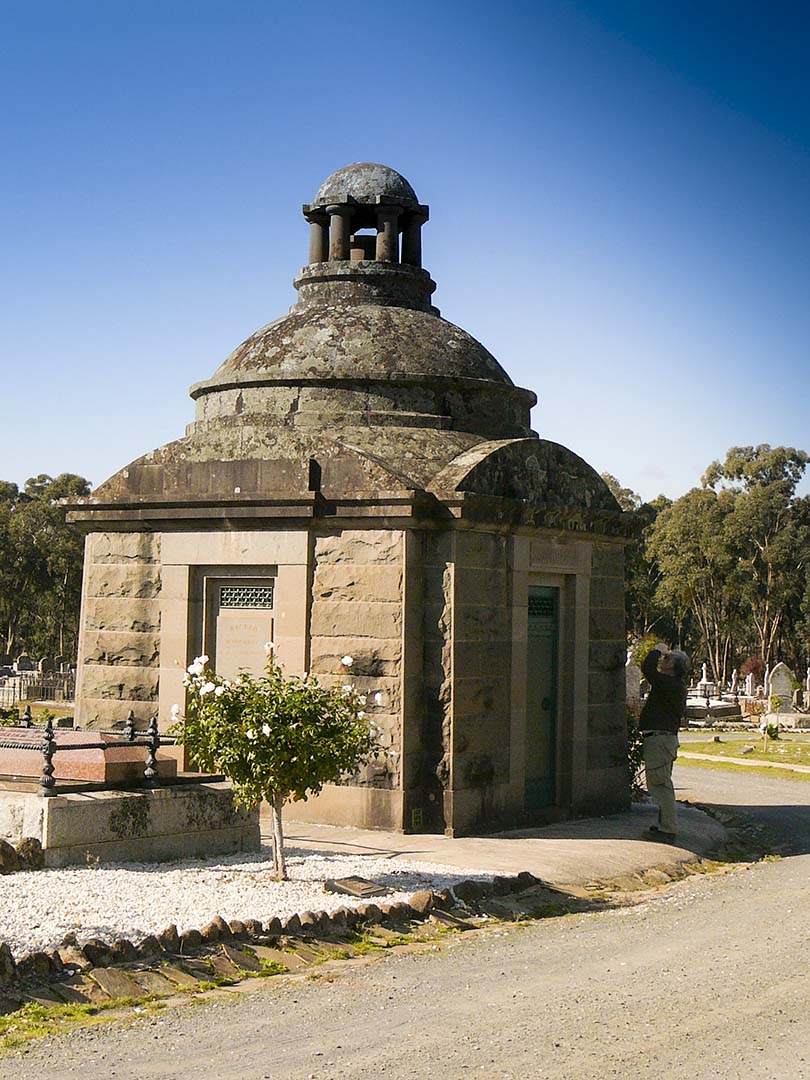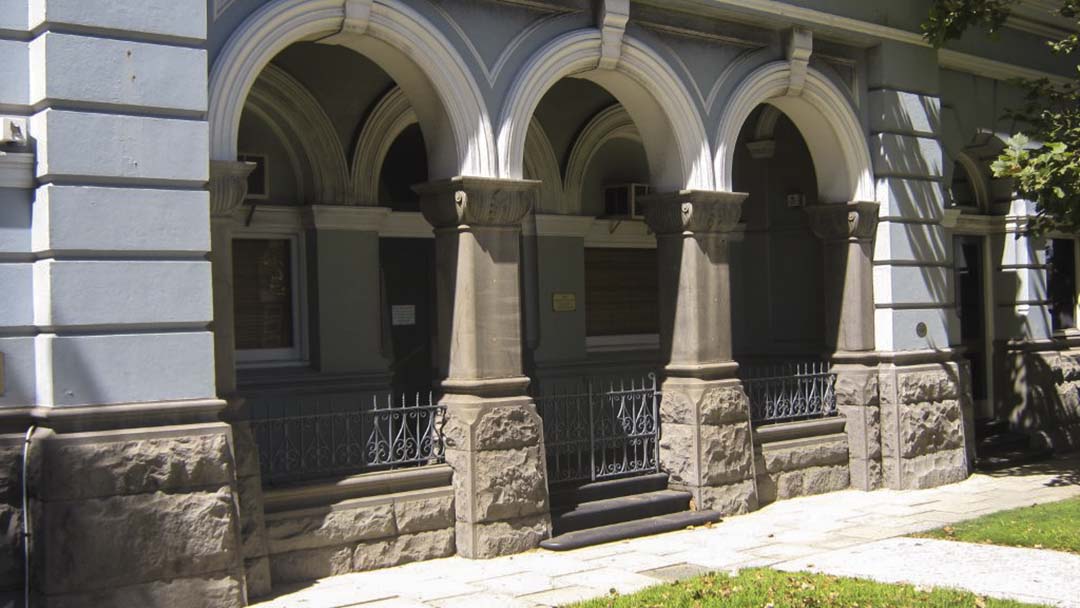
Malmsbury Bluestone doorway from former Colonial Bank, Melbourne (1880) salvaged from demolition and installed at the University of Melbourne 1932.
Year designation
Lithology
Aesthetics
Geological settings
Pliocene – Newer Volcanic Group – Western District Province – Central Highlands Sub-province
Location
Malmsbury, Victoria, Australia
Malmsbury Bluestone doorway from former Colonial Bank, Melbourne (1880) salvaged from demolition and installed at the University of Melbourne 1932.
Australia's Standard of Excellence
After its first recorded use in a local school building (1856), the stone came to prominence due to the construction of the five-arched bluestone Malmsbury viaduct (1859-1861) on the Melbourne to Bendigo Railway. This facilitated the use of the stone in other government and private projects north of Malmsbury. When bluestone sawing technology was introduced to Footscray, (west of Melbourne) in 1867, Malmsbury bluestone was a major source of stone used to mass-produce sawn gravestones, flagstones, lintels, windowsills, kerbstones, and steps, significantly reducing the cost of these items. From the late 1860s the stone was being used in the base courses of large commercial and government buildings in Melbourne, and from 1871 it was used in other states, being New South Wales, Tasmania, South Australia, Western Australia, and also in New Zealand. Some shipments also went to Calcutta, India. Sawing commenced in Malmsbury itself in 1874, powered by a horizontal turbine. Quarrying was a major industry in Malmsbury, resulting in a social structure heavily influenced by immigrant stone workers, many of whom lived in bluestone cottages and had a multigenerational tradition of working with Portland Limestone. Many buildings constructed with Malmsbury bluestone feature in Heritage Registers in several Australian states and in New Zealand. Malmsbury bluestone was referred to as “the standard of excellence” due to its durability and workability, the latter also contributing to its use in carved and decorative work.
- Author(s)


